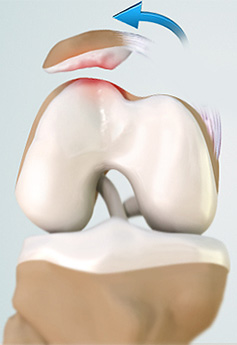Patellofemoral Realignment Surgery
Instability

Some patients suffer with knee-cap dislocations following an injury. The nature of the injury may have been trivial and it unmasks a predisposing factor to knee cap instability. Some individuals are very flexible and have lax ligaments thus putting them at risk for further knee-cap dislocations. Others may have an abnormally high patella or a shallow ‘trochlea,’ which is the groove in which the patella sits. A careful root cause analysis needs to be performed and treatment plan tailored appropriately. Treatments vary from physiotherapy to patellofemoral ligament reconstruction and tibial tubercle osteotomy (the insertion of the patella is realigned to improve patella tracking).
Risks of this type of surgery include; infection, bleeding, pain, stiffness, nerve and vessel damage, recurrence of symptoms, thrombosis, further surgery, mal-union and non-union of osteotomy site, fracture and anaesthetic risks. The risks of these complications are very low and you will not be offered the surgery unless the benefits outweigh the risks.
